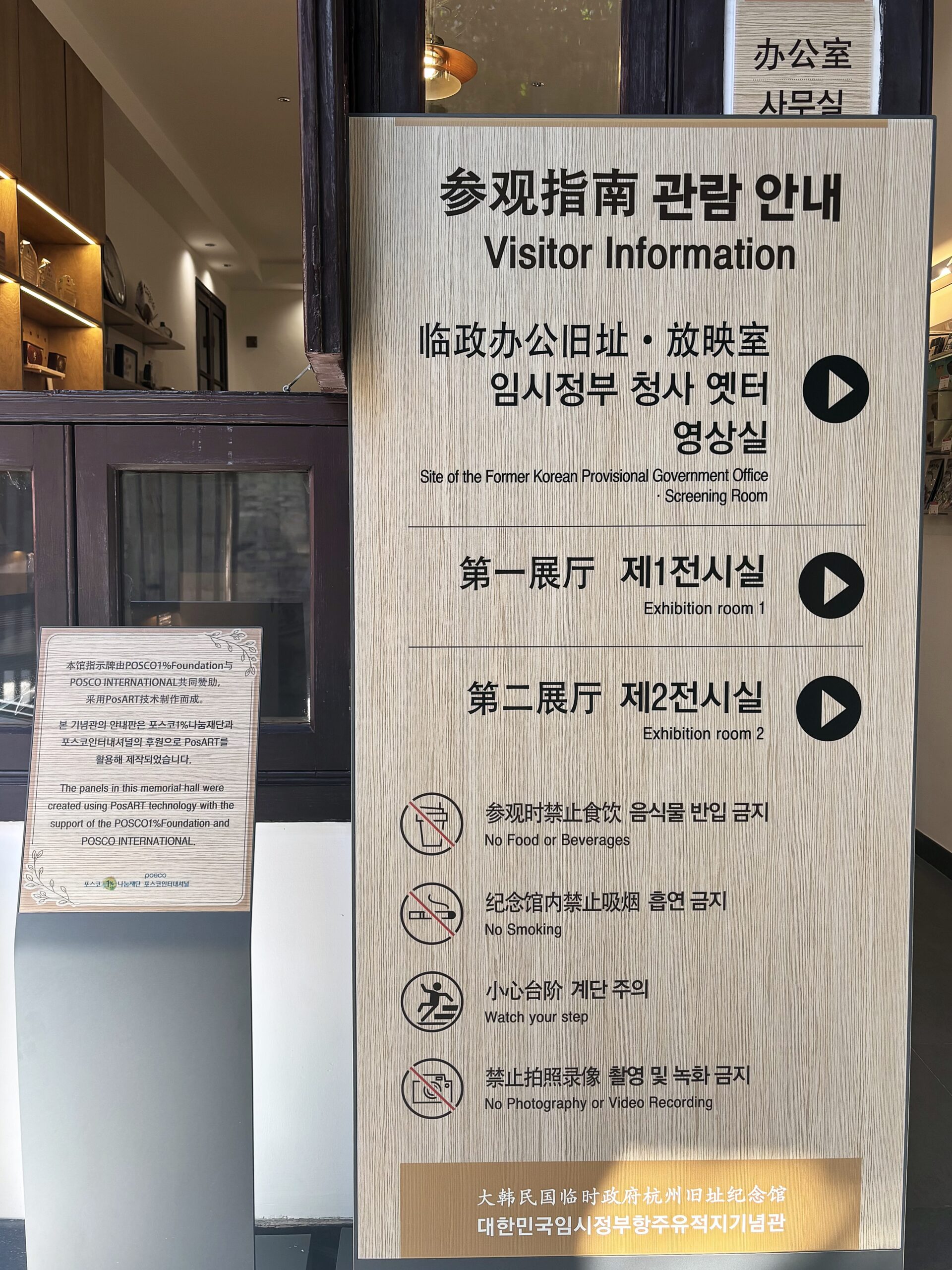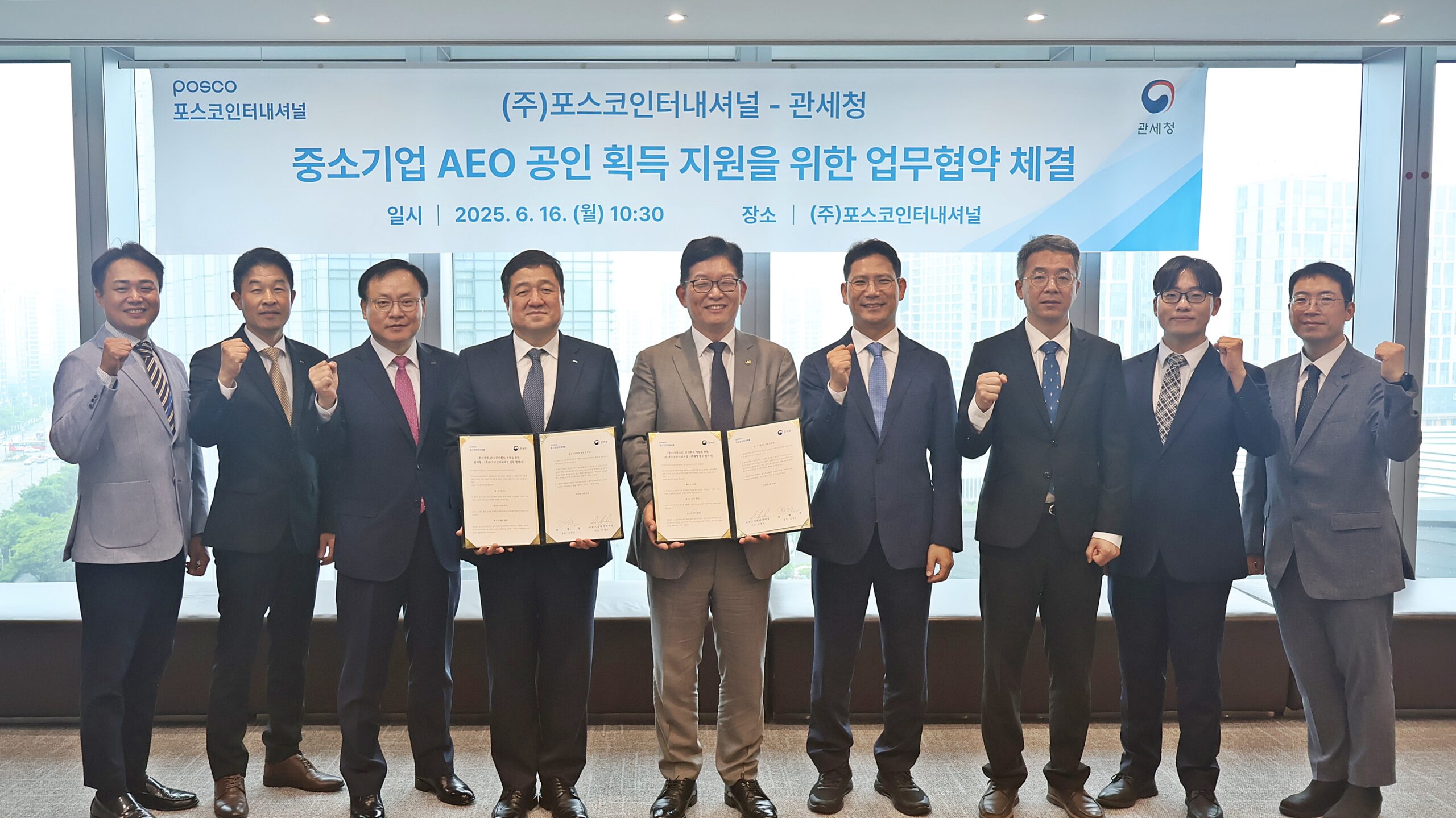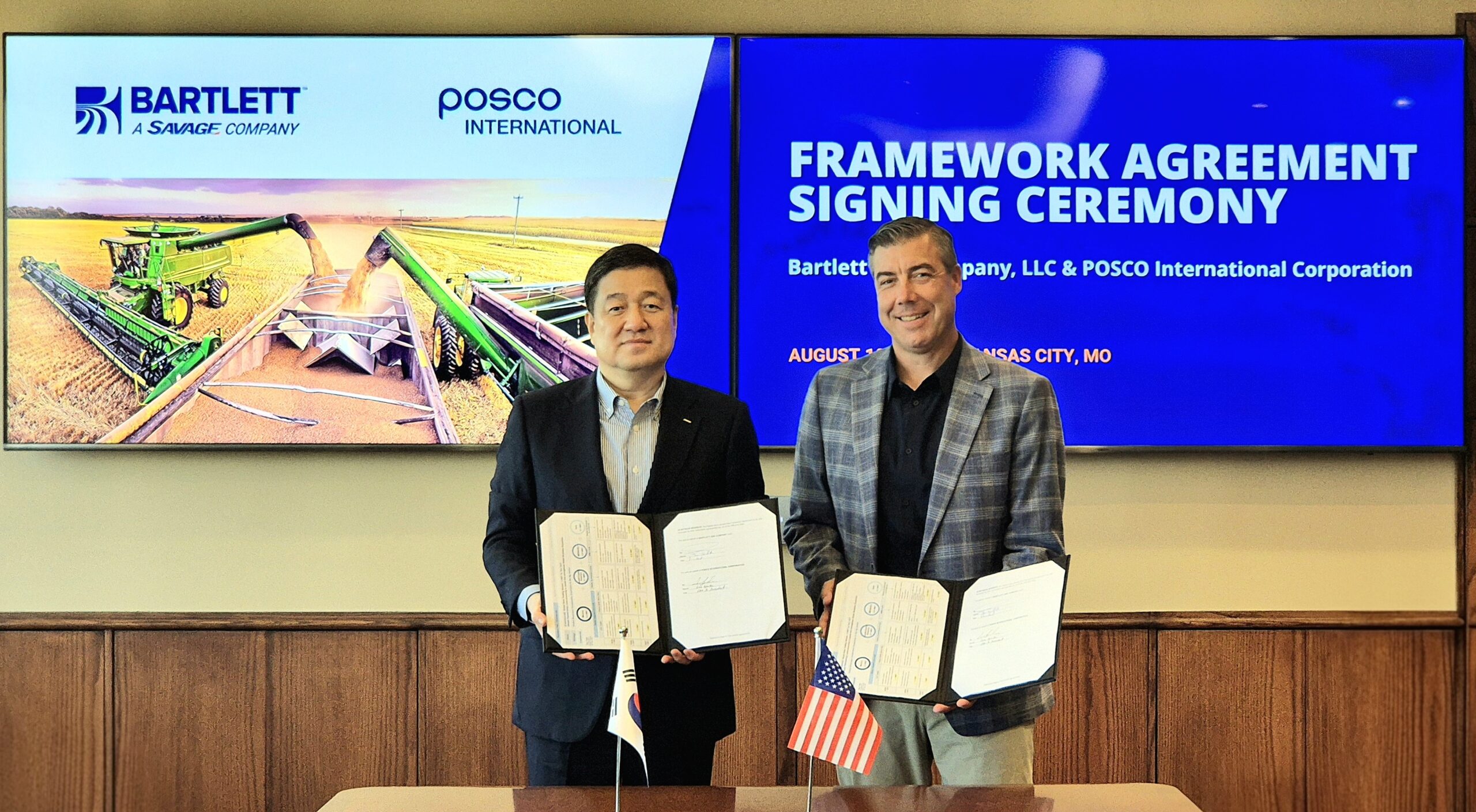- As part of the initiative of POSCO 1% Foundation, 55 new and replacement panels have been installed at three historic sites in China
- Plans to expand the collaboration with public and private sectors, including the Ministry of Patriots and Veterans Affairs and the Independence Hall of Korea, to Central Asia

On the 13th, POSCO INTERNATIONAL (CEO Lee Kye-In) held a ceremony at the Former Korean Provisional Government Office in Hangzhou, China to commemorate the installation of panels at the historic sites of the Korean independence movement.
Attended by Park Hyun-Yul, head of POSCO INTERNATIONAL’s China operations, Kim Jung-Hwa, consular officer for veterans affairs at the Korean Consulate General in Shanghai, and Lee Dong-Wook, head of the Shanghai branch of the Cultural Heritage Restoration Foundation, this ceremony offered a chance to review the newly installed panels and discussed the significance of the initiative.
Undertaken in collaboration with the POSCO 1% Foundation to mark the 80th anniversary of the National Liberation of Korea, this initiative seeks to improve the environment of overseas historic sites of the independence movement. POSCO INTERNATIONAL selected China as the first target, where nearly half of the 1,032 Korean independence movement sites worldwide are located, and installed 55 panels featuring POSCO Group’s high-resolution color steel plate, ‘PosART,’ at three key historic sites.
PosART is a high-resolution color steel plate created by applying inkjet printing technology to steel, offering over four times the resolution of conventional printed steel plates for precise designs.
The targeted sites are historically significant locations where independence activists operated during the Japanese colonization of Korea. These include the Lvshun Japan Guandong Court Former Site Museum in Dalian, where trials of independence activists such as Ahn Jung-Geun and Shin Chae-Ho were held; the Hangzhou Office, where the Korean Provisional Government was active from 1932 to 1934; and the Korean Provisional Government Historical Activity Exhibition Hall, a base for the Korean Provisional Government in 1935.
The newly installed PosART panels offer superior print quality and durability compared to existing ones. They are designed to maintain their quality for an extensive period even under China’s dynamic climate conditions, allowing visitors to better understand the history of the independence movement.
The project was led by POSCO INTERNATIONAL in collaboration with the Ministry of Patriots and Veterans Affairs, the Independence Hall, overseas diplomatic offices, the Cultural Heritage Restoration Foundation, and Godamad, a signboard manufacturing company. It serves as an example of public-private cooperation in preserving and managing overseas historic sites of Korea’s independence movement.
POSCO INTERNATIONAL keeps expanding its efforts to promote veterans’ culture abroad. Starting last year at the Old Korean Legation in Washington, D.C., the initiative has now reached China and is set to extend to Central Asia in the second half of this year. The company also plans to expand the initiative to 24 other countries with historic sites of independence movement.
“It is meaningful to contribute to improving the environment of overseas historic sites of independence movement on the 80th anniversary of the National Liberation of Korea,” A POSCO INTERNATIONAL official stated. “We will continue to collaborate with relevant domestic and international organizations to expand sustainable preservation activities for cultural heritage.”
Meanwhile, POSCO Group is undertaking various activities to promote veterans’ culture to mark the 80th anniversary of the National Liberation. During the Global Volunteer Week in May, POSCO Group executives and employees, along with local students, made traditional Korean flags using the Korean hanji paper at Ongnyong-myeon in Gwangyang, the birthplace of the March First Movement while also conducting diverse volunteer activities to reflect on the significance of the National Liberation at the Seoul National Cemetery, the Pohang Student Volunteer Corps Memorial, and the Independence Hall of Korea in Cheonan.







